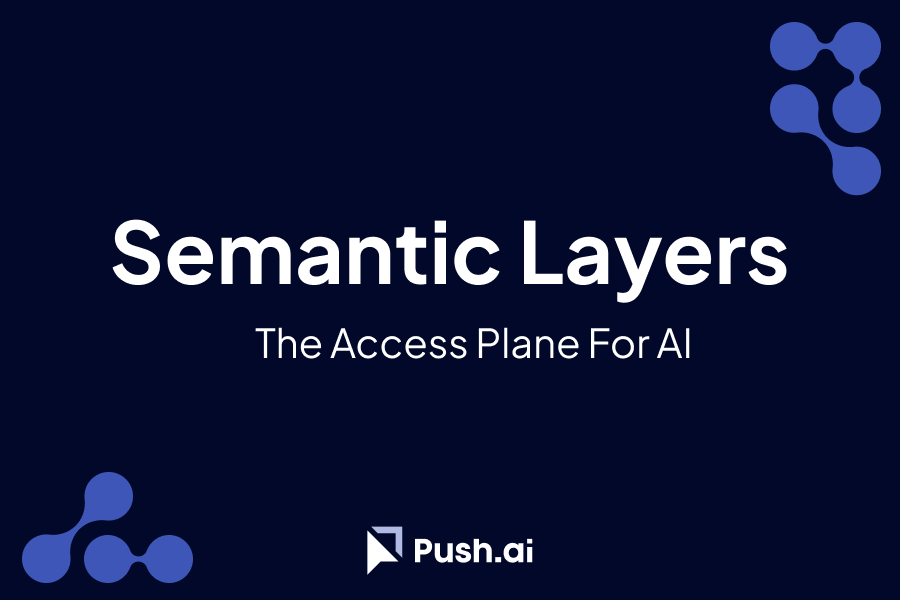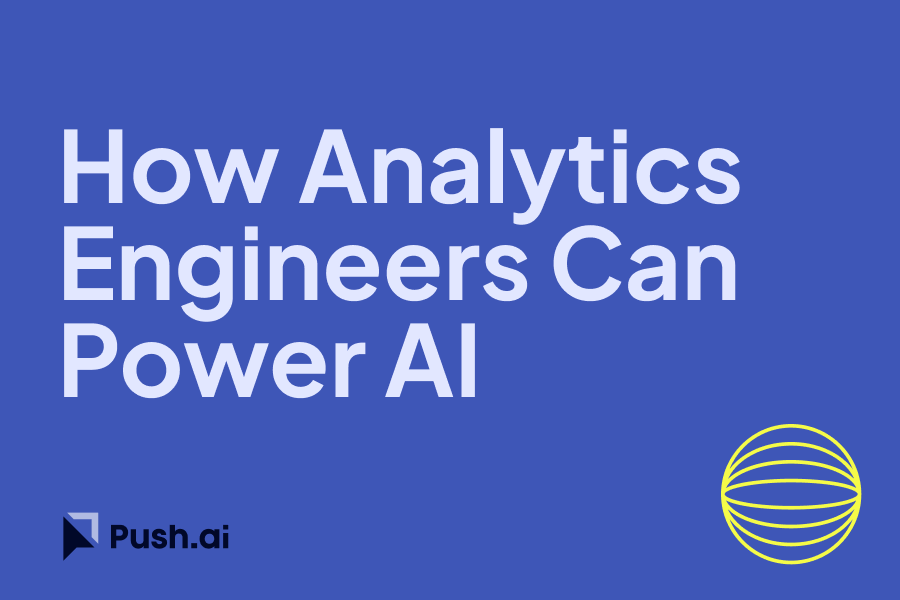Modern analytics has long been built around relational tables: rows, columns, foreign keys, JOINs. That model excels for many use cases, especially when relationships are simple and predictable. But as data gets richer, more interconnected, and more semantic, that paradigm hits limitations. Graph databases and knowledge graphs offer a complementary way to represent entities, relationships, and context in a way that aligns more directly with how information is structured in the real world.
Graph systems allow you to store not just data points, but connections and meaning — traversable paths, inferred relationships, and semantic context. In the AI era, that ability to model and reason over relationships becomes critical for building trustworthy, context-aware systems. A well-designed knowledge graph can serve as the “ground truth layer” that augments LLMs, agents, and analytics with domain-specific logic and context.
What Is a Knowledge Graph / Graph Database?
At a high level:
- A graph is composed of nodes (entities/concepts) and edges (relations/links).
- Entities can have properties/attributes (key-value pairs), e.g. a Customer node might have name, email, signup_date.
- Relationships (edges) describe how two entities connect: e.g. Customer -> PURCHASED -> Product, or Employee -> MANAGES -> Team.
- The schema or ontology defines the types of nodes and possible relationships (and constraints) between them.
- Graph databases (e.g. Neo4j, Amazon Neptune, JanusGraph) or graph layers over existing stores allow efficient traversal, pattern matching, and relationship queries that would be expensive or awkward over relational tables.
Unlike relational models, graphs excel when:
- You need multi-hop queries (e.g. find all products connected via shared features, or friends-of-friends).
- The relationships are as important as the entities themselves (e.g. social graphs, knowledge graphs).
- You want flexibility in incorporating new entity types or relationships over time.
Because graphs represent semantic connections, they naturally align with how AI and reasoning systems prefer to work. In AI systems, knowledge graphs help with entity disambiguation, contextual recall, semantic search, and explainable inference.
Why Knowledge Graphs Exist: The Motivation and Gap They Fill
Relational/SQL-based systems are powerful, but they struggle with certain kinds of problems:
- Schema rigidity — evolving new relationships (new entity types or link types) can force schema migrations.
- JOIN explosion — to find pattern relationships across multiple tables, you often write complex, brittle queries.
- Semantic context loss — relational systems don’t encode meaning beyond keys and foreign keys; they don’t capture why two entities relate.
- Inference & reasoning — relational systems won’t automatically infer that if A → B and B → C, then A is related to C, under certain rules.
Knowledge graphs close that gap by explicitly modeling semantics and enabling reasoning over them. In AI systems, graphs help by:
- Disambiguating entity references (is “Apple” the company or the fruit?).
- Supporting retrieval-augmented generation (RAG) by giving agents structured nodes to traverse.
- Allowing explainability: you can trace a path of relationships to show how the model arrived at a conclusion.
- Bridging structured & unstructured data: text extraction, entity linking, and graph ingestion let unstructured content feed into the graph.
As one recent perspective puts it, knowledge graphs are essential for enterprise AI to “understand complex relationships, disambiguate entities, and enable agentic reasoning engines that reflect how organizations really work.”
How Knowledge Graphs Are Used Today (and Emerging Use Cases)
Common enterprise use cases:
- Customer 360 / Master Data Management — unify customer records across CRM, support, billing, marketing, and link them to behavior and feedback.
- Recommendation & personalization — graph paths help compute similarity, collaborative filtering, or context-based suggestions.
- Fraud detection & compliance — trace money flows, relationships among accounts, detect anomalous loops. Graphs shine at pattern-based detection.
- Supply chain / network modeling — represent suppliers, parts, logistics nodes, dependencies, and detect risks through connected pathways.
- Semantic search / knowledge discovery — users ask natural questions and the system retrieves entities & relationships, not just keyword matches.
- Agentic AI & reasoning support — graph-backed systems enhance agents’ ability to make decisions informed by structured context.
In AI contexts, graphs are often used in conjunction with embeddings or graph neural networks so that entity relationships inform model reasoning and predictions (for example, link prediction, node classification) .
Emerging/next-gen scenarios:
- Knowledge-infused learning — integrating graph knowledge into neural models to guide training or improve interpretability.
- Hybrid neuro-symbolic AI — combining the strengths of deep learning and symbolic reasoning via graphs.
- Graph-enabled agents — agents that use the graph as memory or context store to decide which path to take.
- Graph-RAG or retrieval over graphs + unstructured context to answer complex queries.
- Virtual graphs over warehouse data (without separate graph storage) via tools that layer a graph view over relational tables. (E.g. PuppyGraph offers a “zero-ETL graph query engine” layered over warehouses)
Conclusion & Why You Should Care
Knowledge graphs (and graph databases) offer more than a fancy data store — they provide a semantic backbone for modern AI systems. By capturing entities, relationships, and ontologies, they give AI agents and analytics systems the context and structure needed to reason thoughtfully, not just guess.
For data teams, the opportunity in 2025 is clear:
- Use graphs to connect your scattered data islands and surface relationships the relational world can’t.
- Enable better agentic reasoning, explainability, and context-rich querying.
- Allow AI agents to traverse the graph to access business logic, constraints, and semantics.
- Bridge structured and unstructured sources — letting text, documents, and metadata feed into the same knowledge layer.
As you build out your AI + data strategy, knowledge graphs can become a central pillar in tying together BI, AI agents, and your evolving data fabric. This is a powerful thread you can weave into your blog series or guide — and if you want, I can draft the “Graph + Analytics Engineering” piece next, showing how analytics teams can build graphs and operationalize them.


%201.svg)






